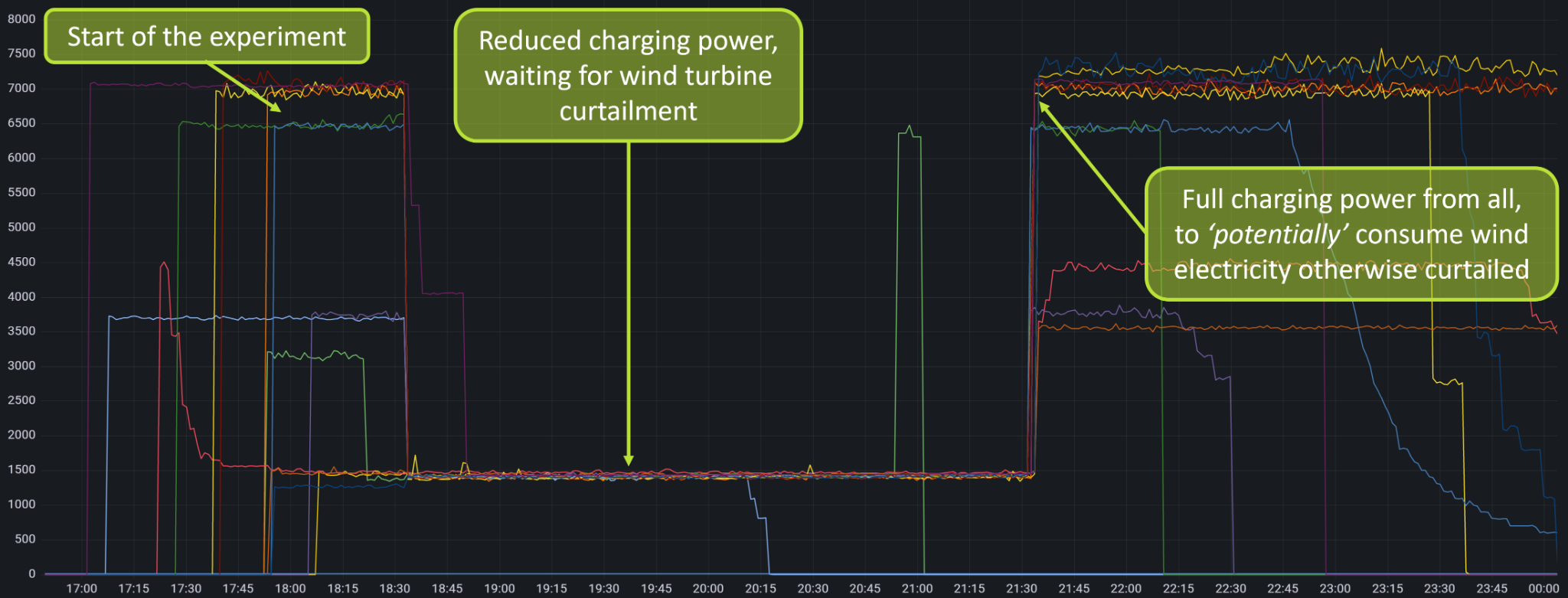

The ReFLEX Orkney project ran an innovative trial, supported by the University of Glasgow, to test and demonstrate how Orkney can use more of the renewable energy produced within its islands. Orkney residents with a Zappi smart charger installed at their home were invited to participate in the three-month trial to show how coordinated EV charging can use more local wind generation and reduce curtailment issues.
Published 27/03/2023
Overview
The ReFLEX Orkney project ran an innovative trial to test and demonstrate how Orkney can use more of the renewable energy produced within its islands. Orkney residents with a Zappi smart charger installed at their home were invited to participate in the three-month trial from January to March 2023.
What's the problem?
The output from some of Orkney’s wind turbines has to be reduced at times of high wind speeds as the limited local electricity grid is unable to take all the energy produced. This is known as curtailment. The lost value for Orkney is estimated at more than £1 million per year (this figure varies year to year).
What is the aim of the trial?
We were attempting to show how coordinated EV charging can use more local wind generation and therefore reduce curtailment of local wind turbines.
How did the charger trial work?
FlexiGrid is a cloud-based software that communicates with, monitors and controls a range of energy resources like EV chargers to create smart local energy systems.
The trial used FlexiGrid to control participating EV chargers to demonstrate how they could be mobilized en masse to respond to local wind turbine curtailment.
What were the results of the trial?
The diagram below shows power levels from a number of chargers. At the start of the experiment when those participating plugged in their assorted EVs, the chargers were drawing various amounts of power. We were able to take control of the chargers bringing all of them down to their minimum output, around 1.4 kW each, whilst waiting for potential curtailment of wind turbines. Then we increased all of the chargers to their rated output (around 7 kW) to consume electricity which would potentially have been curtailed.

For these technical trials a weather forecast tool was used together with some wind turbine data to try and predict when curtailment may happen and then analyse actual grid data received after the event, to see any impact.
What happens next?
We are analysing the results from the trials which took place between January to March 2023 to explore how we can further optimise and scale up the role of local generation with growing demand for decarbonised transport. Given the impressive early results, once at scale we aim to implement commercial rewards for citizens who participate in the future further enabling a more affordable and incentivised energy transition.
The ability to remotely aggregate and control load in this way is an important step in demonstrating the role of smart local energy systems unlocking and creating new network capacity and accessibility to energy services. In time, as we decarbonise our transport and heating systems, it will help us to generate and use more renewable energy locally, within Orkney, whilst also providing opportunities to ‘trade’ with the UK mainland.

